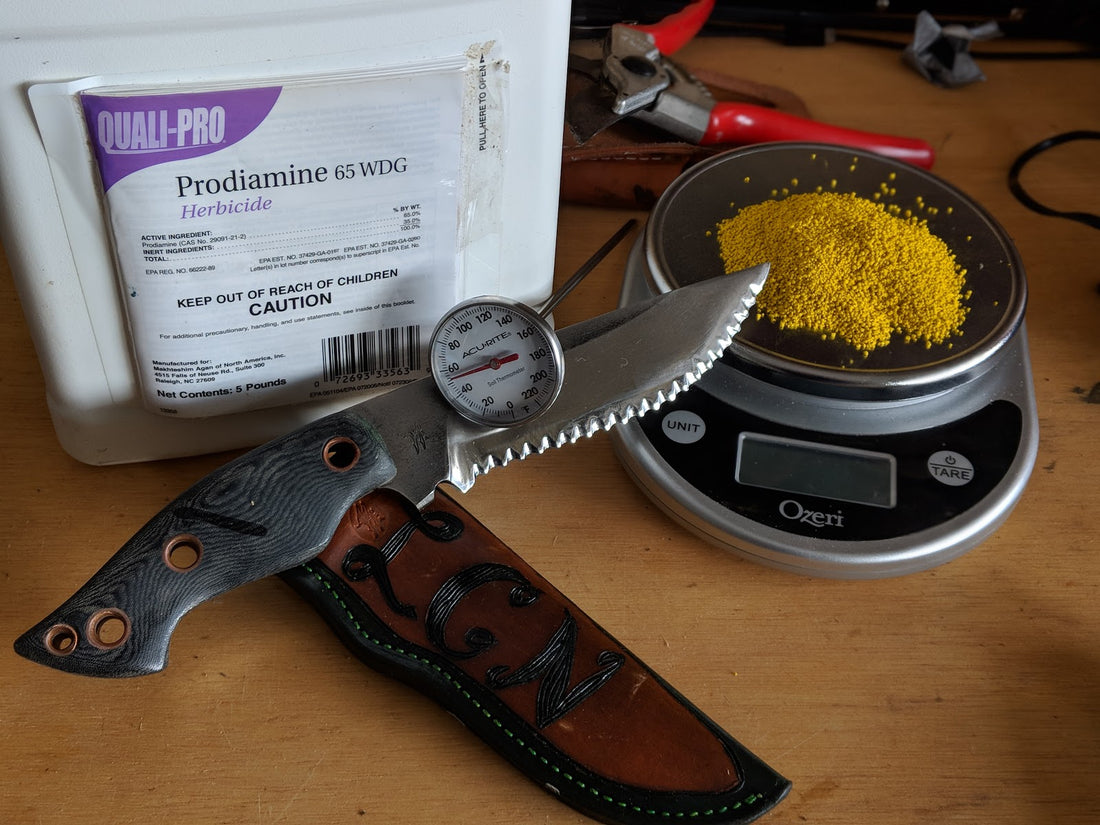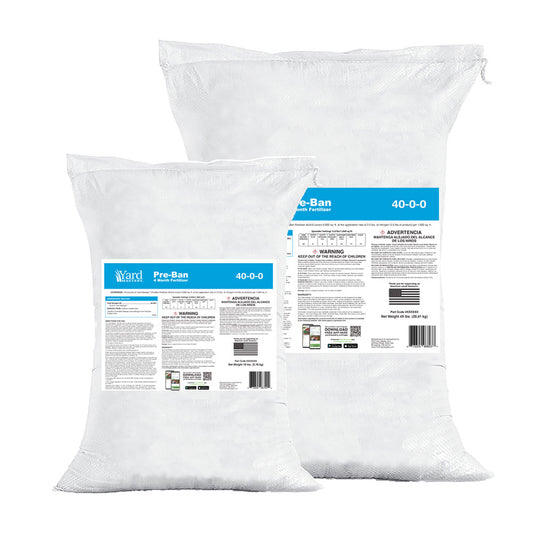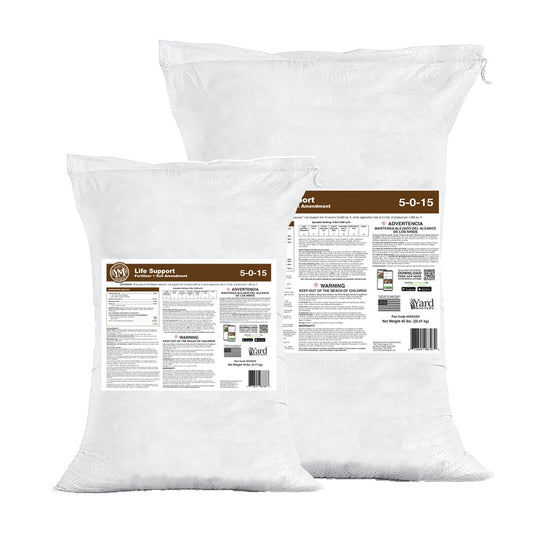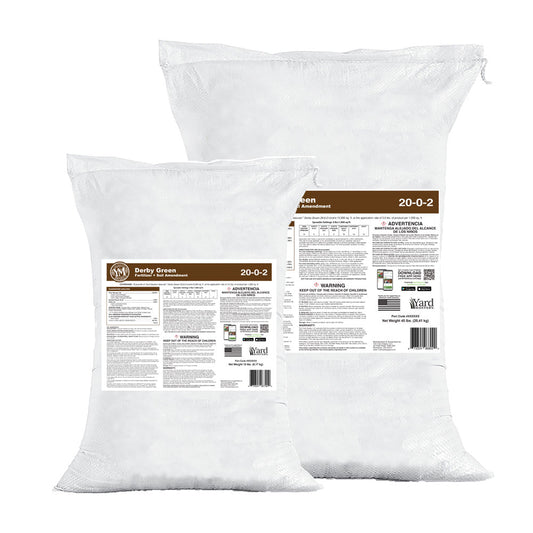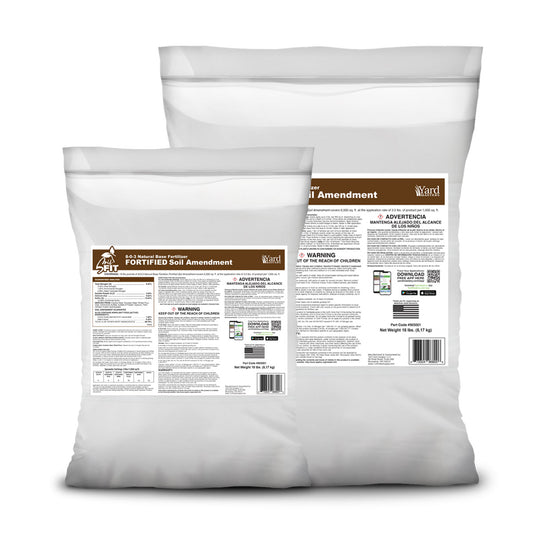When To Apply Prodiamine 65 WDG (Water Dispersible Granule) In Spring Using Split Applications Part 2
This is a 2 part breakdown of Prodiamine 65 WDG giving you a yearly application schedule with soil temperature milestones. Part 1 of this series can be found here.
So you want to understand the meaning of a “split application” or “split app” of prodiamine pre-emergent herbicide and you want to do it liquid. In the previous post, I broke down all the costs of applying your prodiamine in this manner and I’m sure that peaked a lot of interest among you more advanced Lawn Care Nuts. That said, let’s first take a look at the label.
THIS IS AN ADVANCED STRATEGY - NOT FOR BEGINNERS.

If you notice here in the screenshot, they are basically telling us how many months of pre-emergent control or effectiveness we should get at these various rates (these are targets and vary by region).
The challenge we have is these calculations are in “lbs per acre” instead of “oz per 1,000 sq ft.” You will see this quite often in professional products, especially ones NOT necessarily designed to be applied by low volume DIY-style equipment. The original intent of this formulation was to be applied from a rig with a pump, or in more modern times, a full ride-on sprayer spreader (something with a pump to deliver a consistent flow).
It’s ok though, we can get the job done with a hand can sprayer if we are willing to take on the math.
1 acre = 43,560 sq ft
1 lb = 16 oz
The chart shows us that:
.5 lbs/acre = 2 months control
Let’s convert from lbs to oz:
.5 lbs = 8 oz
8 / 43.56 = .183 oz
We have now converted from lbs/acre to oz/1,000 sq ft and know that .183 oz/1,000 sq ft will give us on average, 2 months of pre-emergence control.
(as always, that’s .183 oz prodiamine per gallon of water and 1 gallon of water covers 1,000 sq ft)
So if we wanted to lay down an application of prodiamine 65 WDG in early spring and get ourselves about 2 months of pre-emergence coverage on our 5,000 sq ft lawn, we’d need:
.183 x 5 = .915 oz of product for the application. I’ll be showing you more about mixing and application in next week’s video on the channel.
Soil Temperature Milestones
You now know what it takes to give yourself 2 months of control. But there’s still more, and that’s where the split app comes in.

Remember the soil temperature milestones we were talking about? Go ahead now and pick up the free infographic that my team created for you to help keep your strategy moving along. Download it here.
(Cool season yours is very similar, coming soon - you can use this one too for now)
That infographic is there to key you in on some important temperature milestones and keep in mind, these are SOIL temps.
55F
You want your first pre-emergent app down as soil temps are approaching this milestone. Here is an entire blog post showing you how to find soil temps using the GreenCast tool.
Of course, watch my video here where I take temps in my own lawn using soil thermometer and explain how to use both to really zero in on the right target (video also more context around the infographic). Either way just know this: your first application of prodiamine 65 WDG goes down as soil temps approach that 55F milestone and can you guess what rate to use?
Yes, the 2 month rate!
.183 oz/1,000 sq ft
This is the first of your spring “split applications” of prodiamine 65 WDG.
65F
This soil temperature milestone tells you when to expect to start mowing. For warm-season turf, it tells you when it’s ok to start slinging fert too. Nevertheless, it’s also a precursor to the next important milestone and that is:
70F
This soil temperature is the peak germination period for crabgrass. If 55F is the start, 70F is the pinnacle party time and once you get over 80F or so, it shuts slows and stalls.
So let’s go ahead and apply yet another application of pre-emergent right as soil temps are about to reach that 70F milestone.
In fact, let’s go ahead and use that 2 months coverage rate we already feel comfortable with which was .183 oz/1,000 sq ft and just repeat it. This will now give us yet another 2 months of coverage.
Want to know something? If you apply that first app as soil temps near 55F, and that second app as soil temps near 70F, you’ll be making the apps somewhere around 40 - 50 days apart and you’ll get some nice overlap to ensure you have complete and total coverage.
Can you see the advantage here now? Rather than one “strong” app early in the spring, you use the chart to show you how to “split the applications” into 2 which gives you some nice redundancy should there be unforeseen events.
Splitting your apps helps you hedge against things like unseasonably early downpours, heavy foot traffic or longer than anticipated spring. All of these factors can reduce the efficacy of the app, especially if you only make one single, early “heavy” app. Follow?
The Split Application Window
What’s cool is, that 40-50 days between 55F and 70F -- pretty much no matter where you live, that formula works out. Some of you at the extremes may have to make your “split applications” a little closer together or slightly more spread out, but in almost every case, your second app will be made just as your first one is starting to “wear down.”
This goes for all grass types, everywhere. Go ahead and test it for yourself using the GreenCast tool. And then write down the milestones on the free infographic so you can start planning!
But hang on here Hane! We are not done!!! What about the fall time?
Ok so let’s see what we have leftover for fall. First off, we know that in our first two applications in spring, the “split applications” we used up some of our calendar year allotment. We went with a rate of .183 oz/1,000 sq ft and we applied that twice.
For warm-season turf and tall fescue we are permitted:
.83 oz/1,000 sq ft yearly.
.183 x 2 = .37 oz/1,000 sq ft
.83 - .37 = .46
So you have .46 oz/1,000 sq ft left that you can use for the rest of your strategy and that is where our next temperature milestone comes into play and it’s a familiar one, that being 70F.
70F
We watch this milestone once again but this time on the backswing out of summer and into fall. Temps now will be falling and poa-annua, known as annual bluegrass, needs to be addressed, especially in areas through the transition zone. This one works opposite of crabgrass in that its seeds are dropped in summer and germinate as those temps fall to 70F. But when does it stop?
55F
This is another familiar milestone, and this is the soil temps to watch knowing that soon after we below here, annual bluegrass germination is nearing its end for the season.
Now, we are NOT doing a split app here. Instead, we need all the horsepower up front when soil temps are hitting that 70F mark so we want to go ahead and blow it all out as we approach 70F. Let’s see how long that should last us:
.46 oz/1,000 (remains to be used this calendar year)
Now we need to refer back up to that same chart from page 10. I’ve gone ahead and pasted it here again for you:
Let’s reverse the math and move back up to the per acre rate to see what this yields for us.
1 acre = 43,560 sq ft
.46 x 43.65 = 20.08
20.08 oz per acre is the same as .46 oz/1,000 sq ft
(if you are not getting this part of the math, go back and review - it will click for you eventually)
16 oz = 1 lb
20.08/16 = 1.26
1.26 lbs/acre is the same as 20.08 oz/acre
Now we can read the chart:

Looks to me like 1.25 lbs/acre rate will give me over 6 months of pre-emergent control! Remember, get that infographic and find out when your soul temps fall to 70F in the fall and then count 6 months after.
Does that bring you to a place where soil temps are well below 55F? If so, you are golden! And I bet most of you will be just fine.

Summary of Prodiamine Split Application Rates
Bermudagrass, St Augustinegrass, Zoysia, Centipede, Tall Fescue
Soil Temps 55F - primary target: crabgrass
.183 oz/1,000 sq ft (approx 2 months control)
Soil Temps 70F - primary target: crabgrass
.183 oz/1,000 sq ft (approx 2 months control)
Fall soil temps down to 70F - primary target poa annua
.46 oz/1,000 sq ft (approx 6 months control)
Yearly Total: .83 oz/1,000 sq ft
Kentucky Bluegrass, Perennial Ryegrass
You guys have a lower calendar maximum but your season is shorter and your ground freezes in winter so you will be just fine! Your yearly maximum on the label is .55 oz/1,000 sq ft.
You can use the VERY same strategy with a little twist at the end:
Soil Temps 55F - primary target: crabgrass
.183 oz/1,000 sq ft (approx 2 months control)
Soil Temps 70F - primary target: crabgrass
.183 oz/1,000 sq ft (approx 2 months control)
Fall soil temps down to 70F - primary target poa annua, henbit
.183 oz/1,000 sq ft (approx 2 months control)
Some of you might be wondering if 2 months in fall is long enough? Go look at your temp milestones on the tool and I bet you are just fine. Further north you guys get real cold, real quick and so do your soil temps.
That said, if you plan to overseed your lawn in fall, then this 3rd application is not needed. If that’s you, just utilize this remaining amount in one or both of your spring apps.
You have the flexibility to do that, no problem as long as you don’t exceed your yearly maximum. Also don’t apply too heavy too late in spring because you can run into your seeding window in fall and that opens a whole other batch of questions that we can address at that time!
Can The Rates Vary?
Sure can. I’m giving you one single strategy for split applications here but you can divide them up or “heavy up” wherever you think will work best for your particular situation.
If you have really bad crabgrass issues, maybe you want to heavy up in some of the spring rounds and reduce the fall round. No prob. The key is to NOT exceed the yearly maximum and when you do spray, stay at .183 oz/1,000 sq ft as your minimum. You are free to choose your own adventure from there - my goal with this was to teach you how to read the label and apply the math to your own situation.
Conclusion
So there you go, I hope you got something out of this!
One thing is for sure, this certainly does simplify the strategy when you only have to purchase one single product and especially with larger quantities available like this (remember, this jug will last you 19 years if you have 5,000 sq ft) then you shouldn’t have to purchase multiple products unless a special case arises.
As always, I’ll see you in the lawn!
AL



